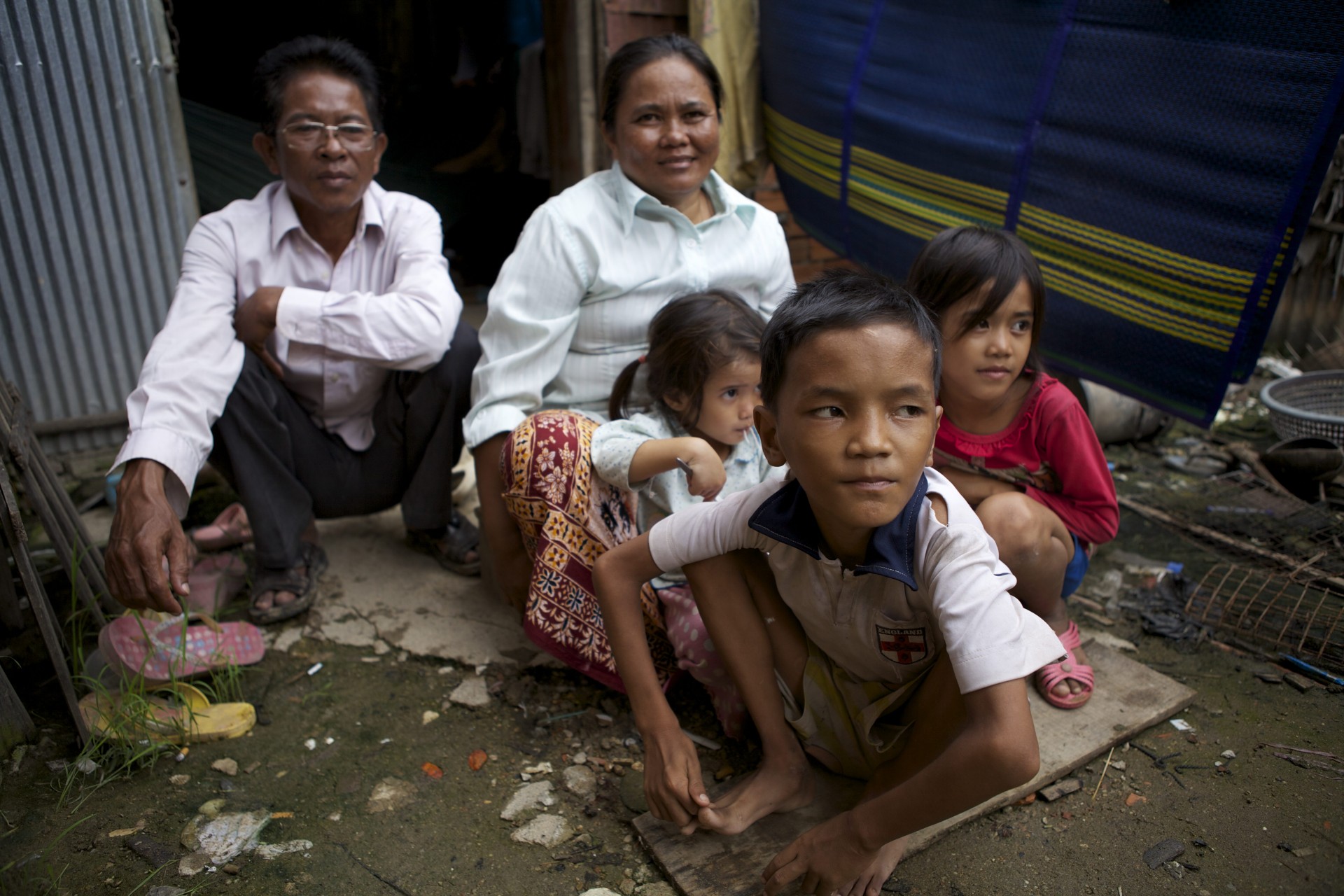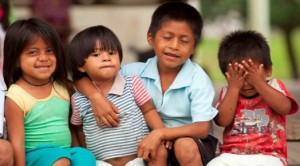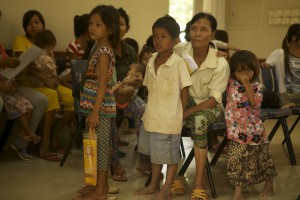The Church of Jesus Christ of Latter-day Saints is a global Church, which according to the latest Church statistics, has 15,082,028 members worldwide and still growing. One of the overarching goals of The Church of Jesus Christ is to fulfill the Lord’s Great Commission to take the message of the Restored Gospel of Jesus Christ to the far-reaching corners of the earth.
As members go forth to share the “Good News,” they find that a large part of having an effective ministry involves providing humanitarian assistance to those who live under less fortunate circumstances. It is for this reason that the “Lord called his people Zion, because they were of one heart and one mind, and dwelt in righteousness; and there was no poor among them” (Moses 7:18). As members strive to emulate the life of the Savior, they begin to fully understand what it means to “lift up the hands which hang down, and [stable] the feeble knees” (Hebrews 12:12).
The Church of Jesus Christ and Humanitarian Aid
The Church of Jesus Christ is involved in many humanitarian efforts around the world to help those in need. The objective is to not only render assistance where needed, but to ultimately teach those who require the assistance how to become self-reliant. It is further hoped that once people learn how to help themselves, they will have a desire to pay it forward to help others in need, and teach them how to help themselves as well.
Such humanitarian organizations as LDS Charities, established by the Church in 1996, provide wheelchairs, clean water, emergency response, food production, vision care, neonatal resuscitation training, and immunizations to people in 179 countries of the world. Donations from Church members, as well as, others through partnerships with organizations around the world, provide the necessary funding for the projects. Largely run by volunteer labor, assistance is “rendered without regard to race, religious affiliation, or nationality and is based on the core principles of personal responsibility, community support, self-reliance, and sustainability.”
The Church of Jesus Christ also maintains the Latter-day Saint Humanitarian Center which was established in 1991 in Salt Lake City, Utah to “prepare humanitarian supplies for use worldwide and train those desiring to develop employable skills to become self-reliant.”
The Liahona Children’s Foundation – Nurturing the Potential of the Children
King Benjamin in the Book of Mormon in his timely discourse asked the pointed question,
For behold, are we not all beggars? Do we not all depend upon the same Being, even God, for all the substance which we have, for both food and raiment, and for gold, and for silver, and for all the riches which we have of every kind? (Mosiah 4:19).
He continues in verse 21 by saying,
And now, if God, who has created you, on whom you are dependent for your lives and for all that ye have and are, doth grant unto you whatsoever ye ask that is right, in faith, believing that ye shall receive, O then, how ye ought to impart of the substance that ye have one to another.
King Benjamin also taught the people that “when ye are in the service of your fellow beings ye are only in the service of your God” (Mosiah 2:17). And so Latter-day Saints throughout the world do so willingly, knowing that their labors are not in vain and that as they serve their fellowman, they are in the service of God. Individual Latter-day Saints are an active part of the Liahona Children’s Foundation whose mission is “to nurture the potential of children to lead healthy and productive lives by eliminating malnutrition and providing educational opportunities among LDS children and their friends.” The Foundation began its operation in eight stakes in Ecuador and Guatemala in 2008. This summer the Foundation will be screening children in new areas of the world to include the Philippines (multiple areas), Cali Colombia, Paraguay, Nicaragua, Honduras, and Guatemala.
One of the major problems that the Liahona Children Foundation faces as it renders humanitarian service around the world is the large number of cases of malnutrition among the children. According to UNICEF,
Over one quarter of the children in resource-poor countries are malnourished, over 100 million under the age of five are under weight, and 165 million are stunted in height. Many malnourished children suffer lifelong cognitive and physical defects that significantly reduce their earning potential as adults, invariably leaving them in poverty and reducing their capacity to fully contribute to society. These effects in turn contribute to a cycle in which their poverty leads to their own children and grandchildren being malnourished.
Largely due to the success of the Church’s missionary efforts to take the gospel to the remote parts of the earth, it is not surprising that a number of malnourished children are found among Latter-day Saint communities in many countries worldwide. This is an ongoing issue that the federally recognized 501 (c) 3 non-profit organization (which is independent from The Church of Jesus Christ of Latter-day Saints) has striven to address for the past six years. Although the Foundation is not directly affiliated with The Church of Jesus Christ, it is administered by faithful Latter-day Saints and funded by contributions from Latter-day Saints in the United States and other parts of the world. Based on their experience over the past six years, it is estimated that at present, there are at least 120,000 malnourished LDS children in the world. The Church of Jesus Christ has over 15 million members worldwide.
According to the article in the Wednesday, 9 July 2014 of the online edition of Meridian Magazine by Robert A. Rees, Ph.D.:
The inspiration for establishing the Liahona Children’s Foundation came when Dr. Bradley Walker, the Foundation’s co-founder and current president, saw the emaciated body of a young Latter-day Saint child in Ecuador. The child, who was under the care of an LDS physician (and former stake president) in the ICU unit of a pediatric hospital in Guayaquil, had been fed platano (banana) water because his parents were too poor to afford milk. Dr. Walker made a commitment to do whatever he could to end malnutrition among Latter-day Saint children.
Liahona volunteers include students from BYU and Utah Valley University. Since its inception in 2008, the Liahona Children’s Foundation has conducted scores of screenings of LDS, as well as non-LDS children, and provided nutrition supplements for the malnourished in the countries of Guatemala, Ecuador, Peru, South Africa, Cambodia and the Philippines. It is projected that the program will expand into other areas of the world such as Asia, Africa, Central and South America, the South Pacific, and Haiti where the levels of malnutrition are significantly high.
According to a recent report by UNICEF,
There is better understanding of the crucial importance of nutrition during the critical 1,000-day period covering pregnancy and the first two years of a child’s life, and of the fact that stunting reflects deficiencies during this period. The damage that stunting causes to a child’s development is irreversible. Under nutrition early in life has major consequences for future educational, income and productivity outcomes.
The Meridian Magazine article further emphasized that without help “a malnourished child is less likely to succeed in school, graduate from high school or technical school, go on a mission, become employable, make a good marriage decision, and become a leader in the church or community.” And so, organizations like the Liahona Children’s Foundation are doing their part to combat the problem of malnourishment among LDS children throughout the world. All the while being reminded of the admonition of the Savior Himself when he taught, “Verily I say unto you, inasmuch as ye did it not to one of the least of these, ye did it not to me” (Matthew 25:45).



